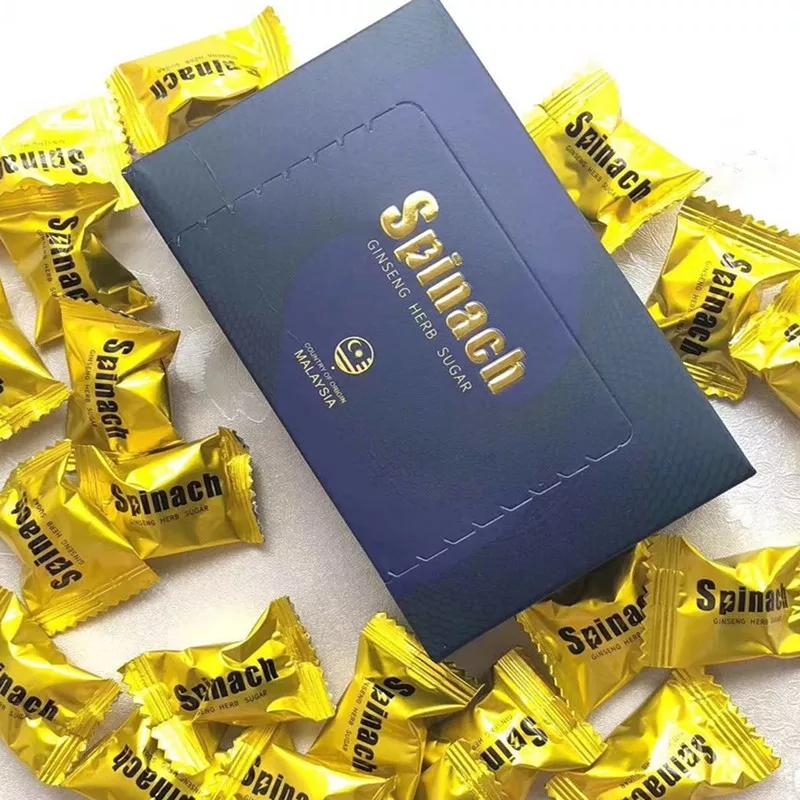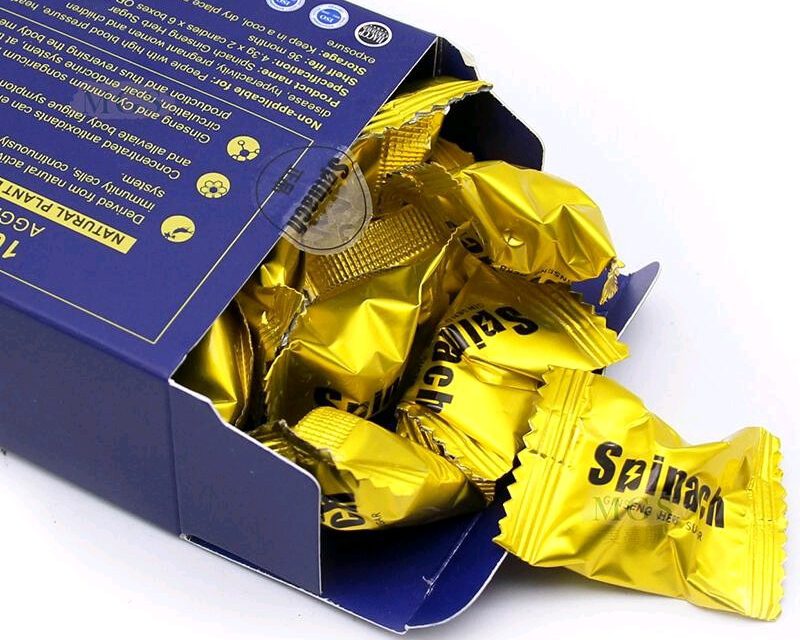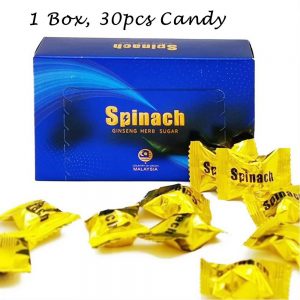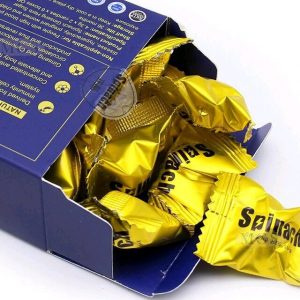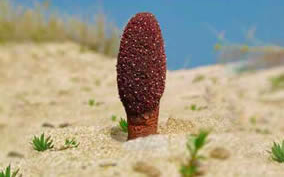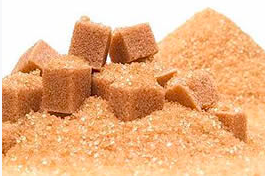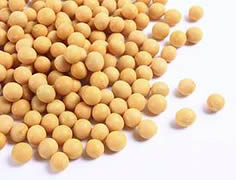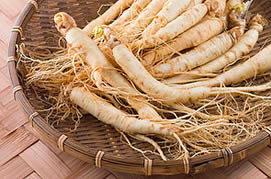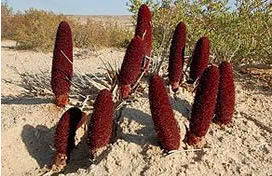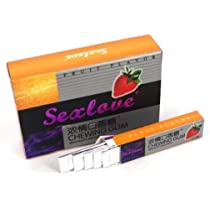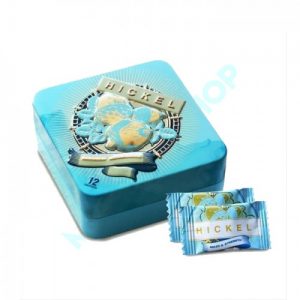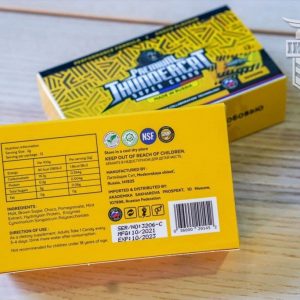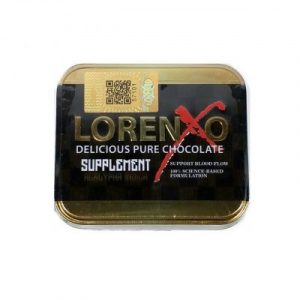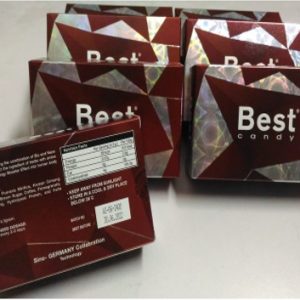Spinach Candy is the fourth generation of the upgraded version of Hamer. This product breaks the traditional process, all raw materials are plant technology extracts. After eating, it is very good to regulate and repair the kidney function. It has a very good effect on the husband and wife, the urinary urgency, premature ejaculation and impotence.
The Ingredients
Cynomorium is parasitic on the roots of salt-tolerant plants, mainly species of Atriplex, the “saltbushes” (for C. coccineum) and on Nitraria sibirica (for C. songaricum). The plant has no chlorophyll; the fleshy red stems or spikes have tiny scarlet flowers. Its active constituents have not been fully analyzed, but cynomorium is known to contain anthocyanic glycosides, triterpene saponins, and lignans. Pharmacology experiments are in the early stage, with attempts to demonstrate a hormonal effect that would explain its use in impotence (its current main application in commercial products), as well as findings that the herb extracts inhibits HIV, lower blood pressure, and improve blood flow in laboratory experiments.
Brown Sugar
Brown Sugar is a sucrose sugar product with distinctive brown color due to the presence of molasses. It is either in unrefined or partially refined soft sugar consisting of sugar crystals with some residual molasses content, or it is produced by the addition of molasses to refine white sugar. Brown sugar contains from 3.5% molasses (light brown sugar) to 6.5% molasses (dark brown sugar). The product is naturally moist from the hyproscopic natura of the molasses and is often labeled as “soft”. The product may undergo processing to give a product that flows better for the industrial. The addition of dyes and/or other chemicals may be permitted in some areas or for industrial products. Particle size is vvariable but generally less than granulated white sugar. Products for industrial use (eg. The industrial production of cakes) may be based on caster sugar which has crystal of approximately 0.35mm.
Coffee
Coffee is a brewed drink prepared from roasted seeds, called coffee beans, of the coffee plant. They are seed of coffee cherries that grow on trees in over 70 countries, cultivated primarily in Latin America, Southeast Asia, and Africa. Green unroasted commodities in the world. Due to its caffeine content, coffee often has a stimulating effect on humans. Today, coffee is the third most popular drink in the world, beside water and tea.
Enzymes are proteins that catalyze (ie, increase or decrease the rates of) chemical reactions. In enzymatic reactions, the molecules at the beginning of the process are called substrates, and they are converted into different molecules, called the products. Almost all processes in a biological cell need enzymes to occur at significant rates. Since enzymes are selective for the substrates and speed up on a few reactions from among many possibilities, the set of enzymes made in a cell determines which metabolic pathways occur in that cells. Like all catalysts, enzymes work by lowering the activation energy (fat) for a reaction, thus dramatically increase the rate of the reaction. As result, products are formed faster and reactions reach equilibrium state more repidly.

Malt
Malt extract’s applications are numerous in the food & beverage industry. Indeed, malt extract is more and more often used in candies, bakery products, sauces and the brewing industry. It’s also used in the pharmaceutical industry and dairies. Malt extract from high diastatic malt is used as a natural source of alpha and beta amlyase, betaglucanese, and other enzymes mostly used in the baking industry. There are multiple advantages for the consumer. Malt extract and colourant are natural, healthy and are not obtained from genetically modified raw materials.
Pomegranate (Punica Granatum) is a fruit-bearing deciduous shrub or small tree growing between five and eight meters tall. The pomegranate is mostly native to the Iranian Plateau and the Himalayas in North Pakistan and Northern India. It has been cultivated in the Caucasus since ancient times, and today, is widely cultivated throughout Iran, Armenia, Azerbaijian, Afghanistan, India, Pakistan, Bangladesh, Iraq, Egypt, China, Burma, Saudi Arabia, Israel, the drier parts of southeast Asia, the Mediterranean region of Southern Europe, and tropical Africa. Introduced into Latin America and California by Spanish settlers in 1769, pomegranate is now cultivated in parts of California and Arizona for juice production. In the Northern Hemisphere, the fruit is typically in season from September to February. In the Southern Hemisphere, it is in season from March to May.
Hydrolyzed Protein
Hydrolyzed Protein is protein that has been hydrolyzed or broken down into its component amino acids. While there are many means of achieving this, two of the most common are prologned boiling in a strong acid (acid-HVP) or strong base or using an enzyme to simulate the naturally-occuring hydrolytic process. According to the U.S. Department of Agriculture’s Food Safety and Inspection Service, hydrolyzed protein is a vegetable source of taste and flavor also called bouillon. The USDA states that “the chemical breakdown of proteins may result in the information of free glutamate like in meat it joins with free sodium to form a natural source of glutamic acid in food. “When added this way, American law does not require the labels to list MSG as an ingredient.
Ginseng is any one of eleven distinct species of slow-growing perennial plants with fleshy roots, belonging to the Panax genus in the family Araliaceae. It grows in the Northern Hemisphere in estern Asia (mostly northern China, Korea, and eastern Siberia). typically in cooler climates; Panax vietnamensis, discovered in Vietnam, is the southern most ginseng found. Panax ginsengs, which are the adaptopgenic herbs, principally Panax ginseng and P. quinquefolius. Ginseng is characterized by the presence of ginsenosides.
Cynomorium songaricum which is also known as “Ginseng In The Desert”. Since centuries ago, it has been medically recognized as “Herb of Longevity”. Cynomorium songaricum is a monoecious plant where its stigma will receive the pollen from the same individual plant. The seed of Cynomorium is very tiny and it looks alike human’s zygote cell under microscope.Cynomorium is known in Chinese as suoyang, which is based on the herb’s medicinal effects, “locking the yang.” It is obtained mainly from the East Asian species, Cynomorium songaricum, though the similar C. coccineum is sometimes utilized as a substitute (and is used in other countries, from Europe to Central Asia, where it is the native species). The plant harvested for Chinese medicine grows at high altitude, mainly in Inner Mongolia, Qinghai, Gansu, and Tibet. It is used to tonify the yang (treat impotence and backache), strengthen the tendons, and nourish the blood to alleviate the blood-deficiency type of constipation.






